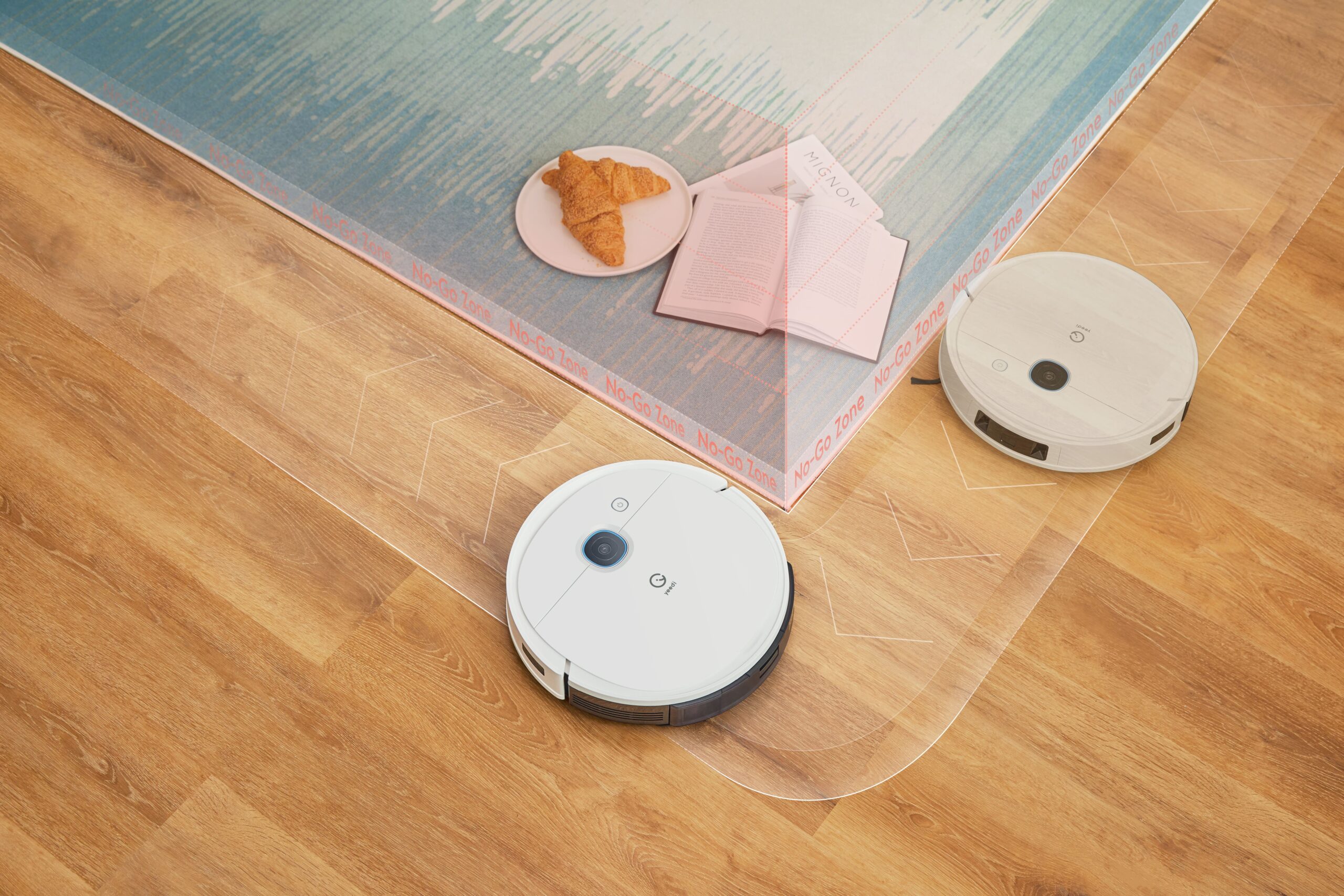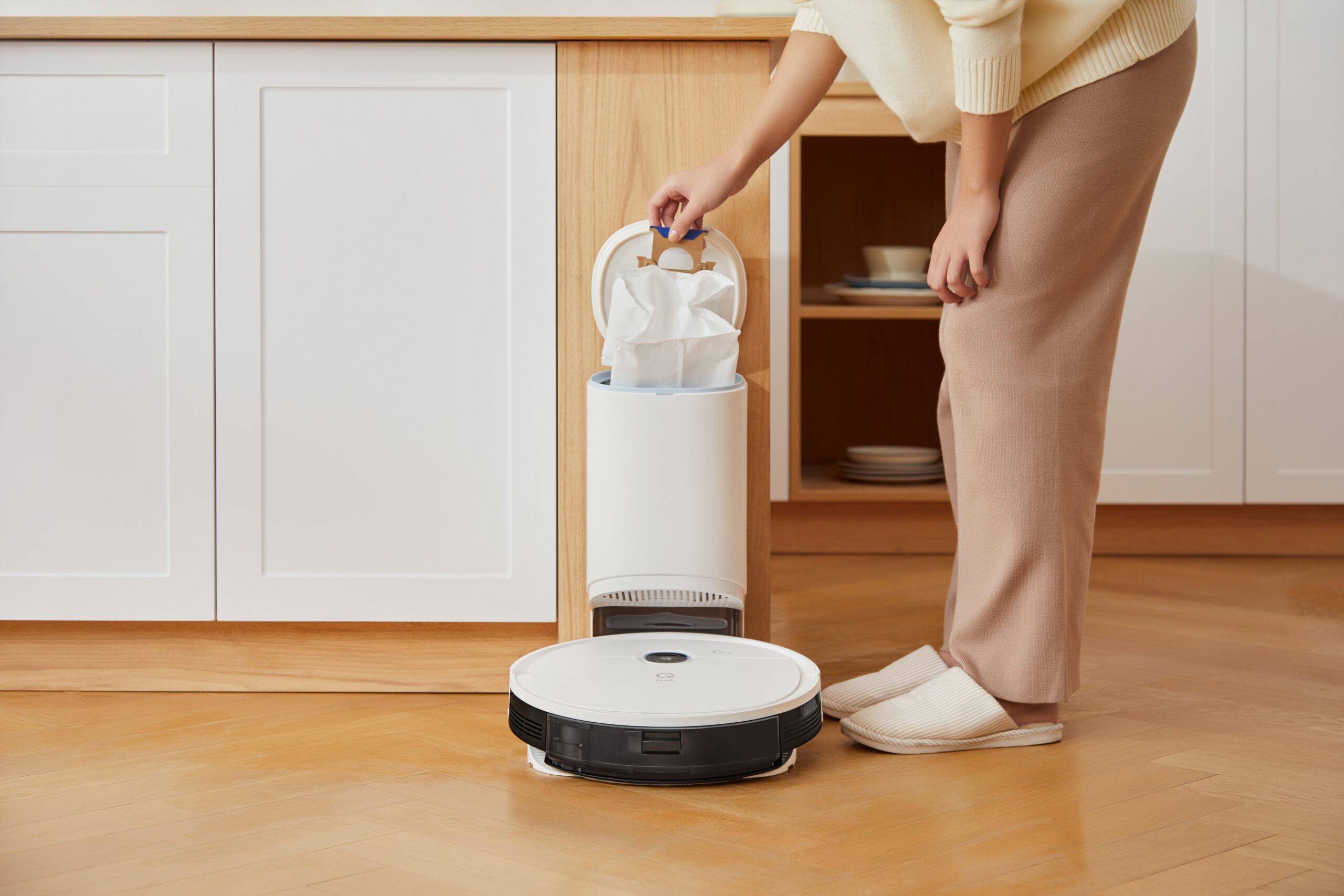Yeedi mop station: I’ve tested a lot of hoovers over the last few months and in a relatively short period of time, I’ve been able to see just how fierce manufacturers are in highlighting the merits of their models over the competition. They all promise consumers that they can get rid of their household chores easily and completely. Obviously, reality tells a different story.
For those models that just vacuum, you will still have to empty the dirt collection basket at the end of each operation. While for those that also wash, the issue becomes even more complex. Having to disassemble, often in several parts, the small rag dedicated to cleaning, wet and to be dried. Yeedi, a brand well known in Europe, has thought of both, trying to improve where possible. That’s why I tried Yeedi Mop Station and Yeedi Vac 2 Pro, its flagship products.
On a technical level, the two models are very similar, with important differences in functionality. Not so much in terms of daily cleaning but in terms of what one or the other has over and above each other. There are two essential points: the Mop Station vacuums and washes and, above all, sanitizes and dries the two small spatulas by itself. It stores clean water in one bin and dirty water in the other. The Vac 2 Pro, on the other hand, has the advantage of emptying the dirt container on its own, which ends up in a bag to be emptied periodically.
Yeedi Mop Station
Compared with classic robots that use a small static mop, the Yeedi Mop Station is washed by two small “miniature mops” with a diameter of 12 cm, through which the water from the 200 ml tank flows (enough for one hour’s washing on the medium setting). The water flow rate can be adjusted on 4 levels. Αlso depending on the room, to optimize cleaning and avoid damage to more delicate floors such as parquet. In addition to the rotation, we can count on a thrust of up to 10N (approx. 1kg) that creates effective friction that can remove any stain in one go.

The two mops are equipped with fringes just like a real mop, enabling them to clean even uneven surfaces. After many tests with different robots, this was the first one able to clean very deep joints in tiled floors. In case the robot encounters a carpet, it will be able to recognize it and ignore it so as not to get it wet. The result is good. The two mops scrub and remove the dirt, leaving a clean floor without halos. Unfortunately, it doesn’t reach the corners and the ‘finishing’ has to be done manually. You can also adjust the water flow on 4 levels, depending on the room, to optimize cleaning and avoid damage to delicate floors such as parquet.
Every 10 minutes of washing, the Yeedi Mop Station will return to base to perform a self-cleaning cycle. Τhis is essential to ensure maximum hygiene. In other robots, with the mop getting dirty quickly, they continue to “wash” the rest of the rooms and that is not hygienic.
On the front, the robot incorporates a hidden compartment to store the mop for maintenance and spare mops. The generous size is due to the integrated self-cleaning mop system. Inside there are two 3.5L tanks, one for clean water (and any disinfectant detergent) and one for the resulting dirty water. Both during and after floor cleaning, mop washing starts automatically. A flow of clean water is sent to the mops, which have a specially designed compartment to remain submerged as they rotate. The dirty water is then sucked up and sent to the specific tank. This operation is repeated several times in about one minute until an excellent result is obtained.


After washing, the mops are automatically dried, which in theory takes 6 hours and ensures that no mold or unpleasant odors are generated. However, the operation can also be controlled via the app. The noise generated is low, but still present and this should be considered. After each wash, it is advisable to empty and clean the dirt tank and the mop tray. The base also takes care of recharging the large 5200mAh battery in about 6 hours.
Yeedi Mop Station with suction pressure of 2,500Pa is also a decent hoover although this functionality is overshadowed by the washing performance. The roller is made entirely of rubber to prevent hair tangling but its size (only 14cm) is a bit limiting. Fortunately, there is a rotating brush to help centralize dirt and get into corners. In case the robot encounters a carpet, it will be able to recognize it and automatically increase the power.
Giving an overall verdict on the Yeedi Mop Station is difficult because it is a product that is completely unbalanced towards the washing function and perhaps it is not even correct to call it a hoover. For the first time, I have tried a robot that can really remove all kinds of dirt like a mop. In addition, the self-cleaning base makes life even easier by providing even more hygiene than traditional methods. The Yeedi Mop Station is a product for those who want to replace manual cleaning with automatic cleaning but are satisfied with an average vacuum.
Yedi Vac 2 Pro
No revolution, mind you, but an attempt to really bring everyday cleaning closer to a task that can be self-managed by a robot, with very little human intervention. How? First, the Vac 2 Pro is sold with a dirtbag emptying station. In this way, either on your own or with a click on the app, you can discard what the robot has collected and place it in a container. The container, when it is full, you can empty it into the trash. Then there’s the small, slim washing mop, which is with its water-filling base. It makes installation and removal much quicker, compared to the competition, which instead requires you to access the bottom of the robot, and detach the magnets or fins and get unstuck.
How it works -Yeedi mop station
Otherwise, the Yeedi Vac 2 Pro does its job more than optimally. Nothing to say about suction, which here strangely takes place from the center of the room to the edges, reversed therefore compared to other brands (such as Xiaomi). Washing is certainly more critical for some floors, including porcelain stoneware, like mine, where it is already difficult with the normal mop, let alone with a robot that continues back and forth on its way, without steps and without a firm push to remove the curves of the passage. Nothing extremely critical, of course, but for the ‘fixer-uppers’, including myself, it will mean a hand-rubbing of the most obvious dullness. No problem on darker floors, such as wood effect or classic terracotta, which give a clean, unblemished feel.
This is where I saw the usefulness of an accessory like Yeedi Vac 2 Pro: you must use it often for daily cleaning. Especially crumbs and dust that are created in this capricious spring but don’t think you can say goodbye, forever, to the traditional scrubber, which is the only one capable of really getting to the bottom of the stains and the dirtiest dirt. So, bye-bye shovel and broom, but the rest is still to come.
How the app works
I admit it took me a while to understand how to customize the app to my needs but that’s not Yeedi’s fault. Rather, it’s the fact that I must interface, almost every day, with very different applications for managing the connected home and household chores. The app of the same name is perhaps the simplest ever made for a little robot of this kind. After the first registration, which is done by framing the QR code under the top opening cover, you add the machine and proceed with mapping.
Here is the first difference. Yeedi Vac 2 Pro doesn’t use a classic LiDAR sensor to move between rooms but a camera that is directed upwards. A smart move, because the hoover can capture the floor plan of the flat through the dimensions of the ceiling. The big advantage is that furniture is not included in the floor plan. Although, it is avoided with the other sensors integrated along with the case. Another advantage over the LiDAR sensor is the size: where comparable hoovers are larger, this Vac 2 Pro manages to hold its shape, really squeezing in wherever it wants, even between the chairs in the kitchen that I forgot to place upside down on the table.
If the robot hoovers encounter obstacles on its maiden voyage, it lightly touches them with its bumper and keeps them as objects on the map. There is one thing, though: imagine LiDAR as a beacon in the night that allows its integrator to work in the dark. The Vac 2 Pro’s camera doesn’t know how to be without light, i.e., it needs a certain amount of brightness to do its job properly, otherwise, it gets disoriented.
Do I buy it or not?
Yeedi Vac 2 Pro has just arrived on the European market for 450 euros in the version with a self-suction turret (350 euros just for the robot). A lot or a little? Looking at what’s out there, the cost is quite honest, especially considering the completeness of the package and the quality of the result. As per the premise: any hoover that cleans should not be understood to sit on the sofa at the weekend instead of doing its duty at home. It’s an essential help during the week and a way to halve (if not more) recurring cleaning tasks, relying on a stable, well-established system that leaves few tasks for the tenants.



